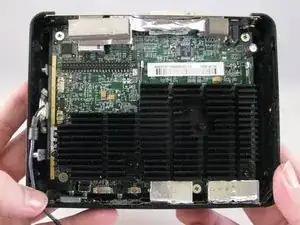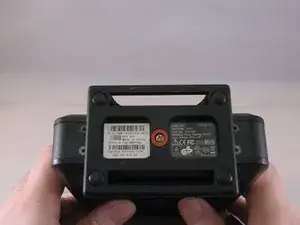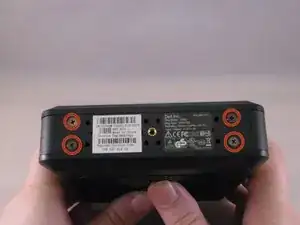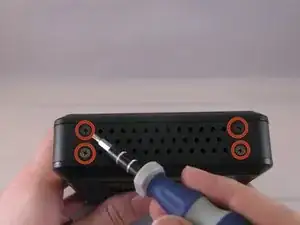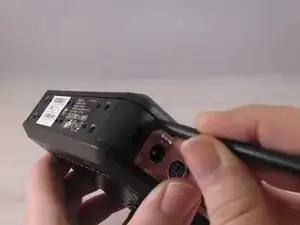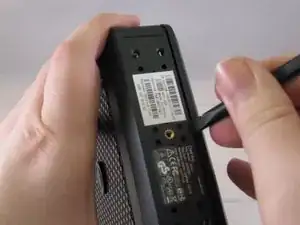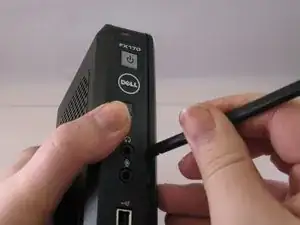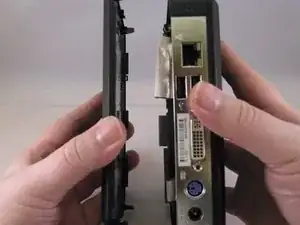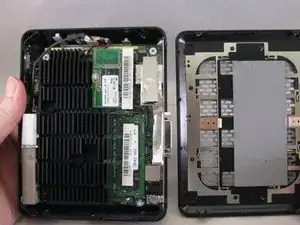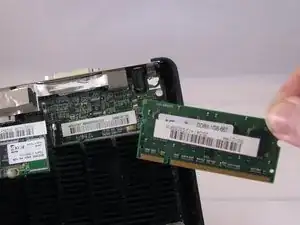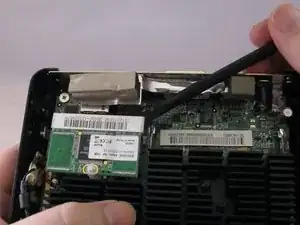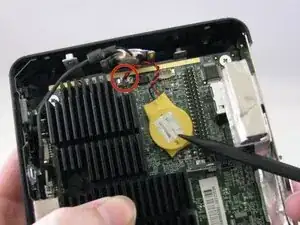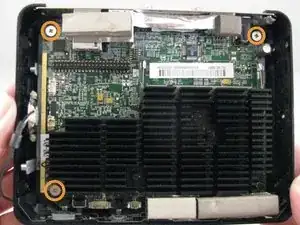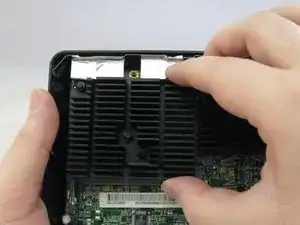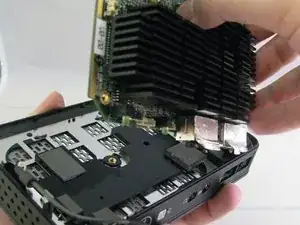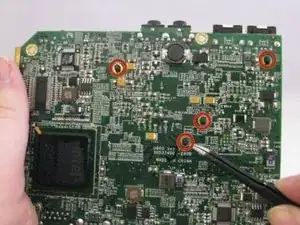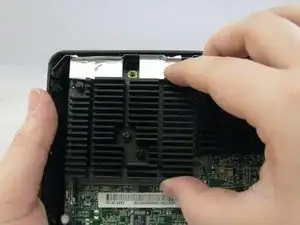Introduction
The Heat Sink is the metal part with fins that is mounted on top of the motherboard.
Tools
-
-
With the base stand facing upwards, unscrew the 6mm Phillips #2 screw.
-
Pull the base stand straight up from the device.
-
-
-
Unscrew and remove the eight 4mm Phillips #0 screws (four on top, four on bottom) from the top and bottom of the device.
-
-
-
Run the flat side of the spudger along the entire line of the case starting from the back where the power plug and a small screw are located.
-
-
-
Once the clips have been released, gently disengage the cover from the rest of case by pulling in opposite directions.
-
-
-
Using fingers, push the clips on either side of the RAM. The RAM will pop up at a 45 degree angle when both clips are disengaged.
-
-
-
Using the spudger, gently push on the underside of the memory board to loosen it. Gently grasp each side and pull up to release the memory board.
-
-
-
Remove the two foam bumpers that lie on top of the two front USB ports with fingers. Do not throw them away.
-
-
-
Disconnect the speaker cable from the motherboard by gently pulling it straight up to disengage it from the port.
-
Remove the four 4mm Philips #0 screws that secure the motherboard to the case.
-
-
-
Gently grasp the motherboard by the heat sink (the black finned piece). Lift the motherboard at an angle such that the ports along the back side come up first.
-
Continue lifting the motherboard, then slowly tilt the piece off to the right to break the Mylar tape over the front USB ports.
-
-
-
On the back side of the motherboard, use the tweezers to squeeze the four protruding clips. These should be in the same position as the four black buttons recessed into the heat sink (when viewed from the front).
-
To reassemble your device, follow these instructions in reverse order.
